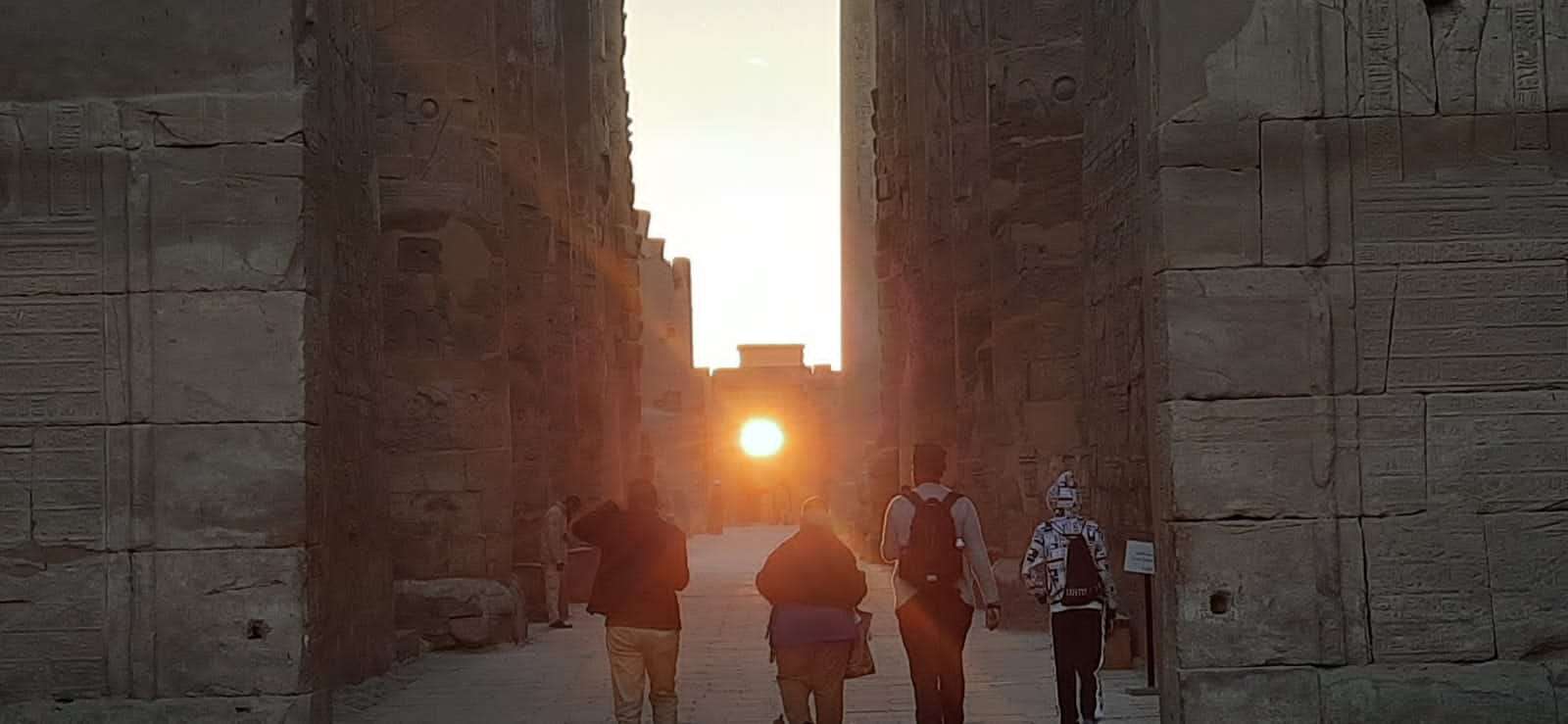The Karnak temples witnessed, on Tuesday morning, the sun shines to its main axis, an event that coincides with the beginning of winter on December 21 of each year, when the sun shines gradually to the main axis of the temples.
Mustafa Al-Saghir, Director General of the Karnak Temples and Al-Kebash (Rams) Road in Luxor, said that the Karnak temples had a great turnout today from Egyptian and foreign visitors of different nationalities, who were keen to watch and record this unique event and take many memorial photos.
Luxor Governorate organized a celebration on this occasion in cooperation with the Supreme Council of Antiquities.
This ceremony was attended by the Governor of Luxor, the Director of Luxor Security, a number of senior officials of the Ministry of Tourism and Antiquities, and the executive officials of the governorate.
The celebration witnessed several activities such as pieces of folklore, holders of roses and flags from the scouts teams and the music accompanying the celebration.
It is worth noting that this celebration was attended by the Misr (Egypt) Company for Sound and Light, the Directorate of Youth and Sports, the Directorate of Education, the Authority of Culture Palaces in Luxor, and other concerned parties.
Mustafa Al-Saghir pointed out that the phenomenon of the sun's shining on Karnak's Temples is one of the unique phenomena that highlight the genius of the ancient Egyptian and his progress in astronomy, architecture and engineering.
The ancient Egypt was keen to establish the main axis of the Karnak temples, which extends from the west from the first edifice to the sixth edifice in the east of the temples, passing through the Holy of Holies and the eastern gate.
The construction of this axis took more than a thousand years, which highlights the extent of the superiority of the ancient Egyptian through the ages.
Translated by Ahmed Moamar













